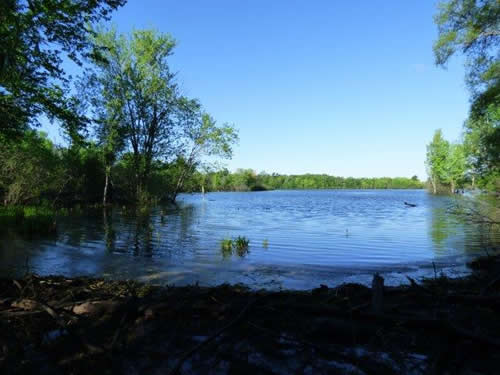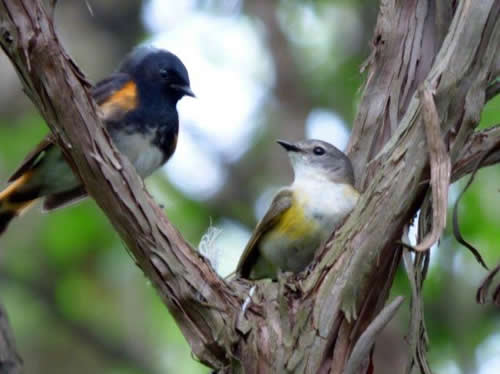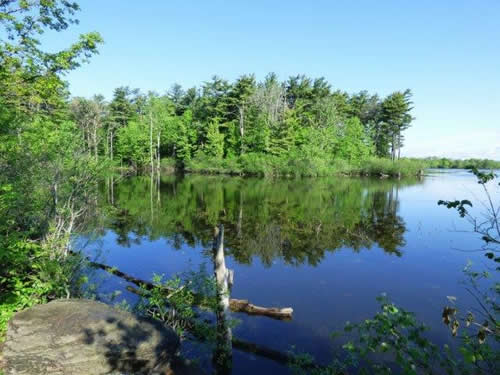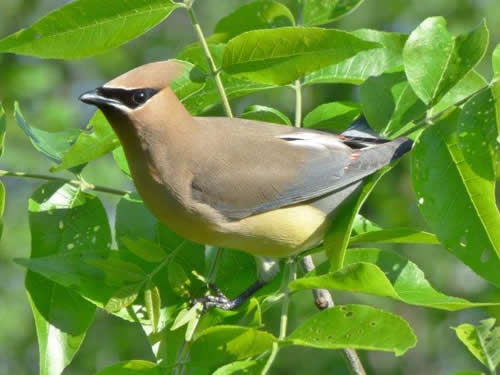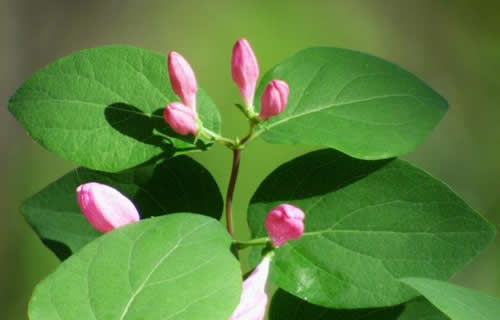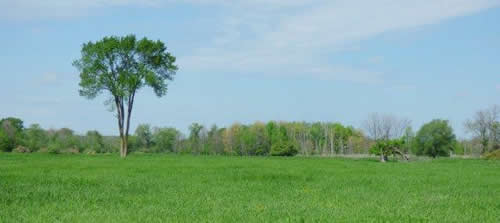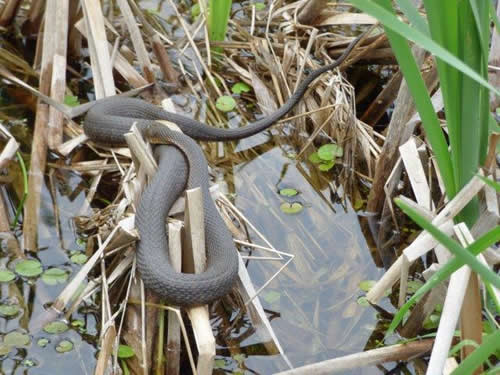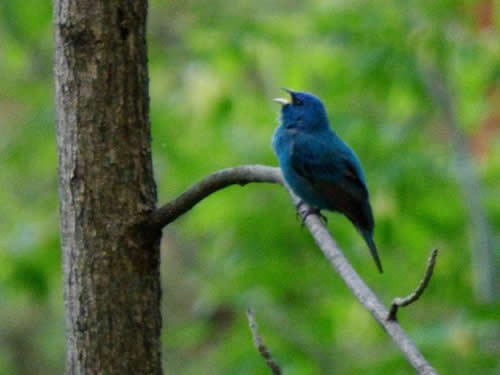|
MIGRATION RESEARCH FOUNDATION |
|||||||||||||||||||||||||||||||||||||||||||||||||||||||||||||||||||||||||||||||||||||||||||||||||||||||||||||||||||||||||||||||||||||||||||||||||||||||||||||||||||||||||||
I’ve been participating in the Great Canadian Birdathon (formerly the Baillie Birdathon) for close to 20 years. On many of those occasions, I fully embraced the “-athon” aspect of the event, going all out to see as many bird species as possible within 24 hours in May. Some of my more intense efforts included two attempts to break Quebec’s “big day” record in 2011 and 2014 and a couple of times criss-crossing a good portion of southern Alberta in 2008 and 2013. However, for various reasons (one of which will be apparent in the account which follows), this year I ended up with more of a Bird-a-bit than a Bird-a-thon! I only managed around 4 hours of effort this year – and on the last day of May at that – but still managed to have some interesting sightings and experiences, as outlined below.
I kicked off my count unusually late, around 8 am. My first stop was the Britannia Conservation Area in western Ottawa – my default local birding area. It is a great spot to enjoy spring migration, and I’ve included it on a couple of previous Birdathon itineraries. This May, however, the unusually high flooding of the Ottawa River made large parts of the park inaccessible for much of the month. In particular, it was impossible to circumnavigate Mud Lake in the usual manner, as it became fully connected to the river. Fortunately, by waiting until the very end of the month for my Birdathon, water levels had receded just far enough that I could make it around wearing rubber boots.
My first birds included some of the local nesting species, ranging from Wood Duck and Pileated Woodpecker to Eastern Wood-Pewee, Great Crested Flycatcher, Black-and-white Warbler, and Baltimore Oriole. Aside from Canada Goose, the most abundant species by far were American Redstart and Yellow Warbler, with more than 30 of each. I also was lucky to find some late migrants, including Wilson's and Blackpoll Warblers - the latter of which was still quite common, with 7 males singing (and quite possibly some silent females present as well, but more easily overlooked).
By the time I completed my hour-long loop around Mud Lake, I had recorded 49 species, two of which (Green Heron and Alder Flycatcher) I saw here for the first time this year, despite half a dozen other visits earlier in the month.
I next made a brief stop at Andrew Haydon Park, just a couple of kilometres upstream along the Ottawa River. A Brant had been there recently, but I couldn’t find it on this occasion. However, a couple of Purple Martins from the nearby colony at Dick Bell Marina were flying around, and I also added Cedar Waxwing and House Finch.
From there I moved further upstream again to the south end of Shirley’s Bay, where wet ash/maple forests come right up to the edge of the river. Several late migrants were present in this area, including three new warblers for my day's list: Tennessee, Yellow-rumped and Canada. Just a bit farther inland, there are some shrubby areas, where I quickly added House Wren, Brown Thrasher, Field Sparrow, and White-throated Sparrow. I left with 59 species, and bumped that to 60 with a roadside Wild Turkey as I drove away.
A quick stop at the Nortel Marsh for Willow Flycatcher, Indigo Bunting, and Bobolink failed to yield any of those species, but instead I found my only Savannah Sparrows of the day, and also added Swamp Sparrow and Common Yellowthroat to my running total.
By this point I was running relatively short on time (I had work to do at the office!) and it was getting increasingly cloudy – with bird song tapering off correspondingly. Two quick walks along Sarsparilla and Jack Pine Trails in Stony Swamp produced another two species each – first a reliable Marsh Wren and a regionally uncommon Golden-crowned Kinglet, then a couple more warblers at Jack Pine: Ovenbird and Black-throated Green Warbler.
My final stop was a brief roadside scan at the Moodie Road gravel pits. Although action on the water was somewhat disappointing, with only Herring Gull adding to my list, the surrounding open landscape easily yielded another five species I hadn't yet seen: Turkey Vulture, Red-tailed Hawk, Mourning Dove, Barn Swallow, and Bank Swallow. I headed to the office with a total of 73 species – quite modest compared to most Birdathons, but not bad for a few hours of effort on the fringe of a large city, at the tail end of spring migration. Soon after I had settled at my desk, I saw a small flock of Rock Pigeons fly by … #74! Skies were clearing a bit again by evening, so after supper we went out for a little family walk to the local park.
I didn't really expect to add any species to the day's list, but was pleasantly surprised when i thought I heard the distinct call note of an Indigo Bunting as we entered the local woods. But it was high in the canopy and did not vocalize again, so for an uncommon species that I hadn't yet observed anywhere in 2017, I was a tad uncertain. Fortunately, as we neared the far side of the forest, I heard the full song of an Indigo Bunting loud and clear - and there it was, right at eye level for once:
With that surprise late addition, my total for the day ended up at 75 bird species. Decidedly modest compared to most past years, and especially meager with respect to waterbirds (10 species) and raptors (4 species) . On the songbird side though, numbers were surprisingly decent given the date and limited effort, including 6 flycatchers, 13 warblers, and 6 sparrows. Of course there were plenty of species missed too, including some surprisingly common ones like Great Blue Heron, Red-breasted Nuthatch, and House Sparrow ... maybe next year! As always, I present below my full list for the day, and gratefully welcome any contributions to my Birdathon fundraising efforts for McGill Bird Observatory and Bird Studies Canada's research and conservation of Canadian birds. Any amount is appreciated, and Canadian donors will automatically receive a charitable tax receipt for any contributions of $10 or more. To donate securely via credit card, please go to my Birdathon page; if you prefer to write a cheque, please make it payable to Bird Studies Canada but mail it to McGill Bird Observatory at: PO Box 10005, Ste-Anne-de-Bellevue QC, H9X 0A6. Ottawa West "Bird-a-bit" --- May 31, 2017 --- List of 75 bird species observed
|

